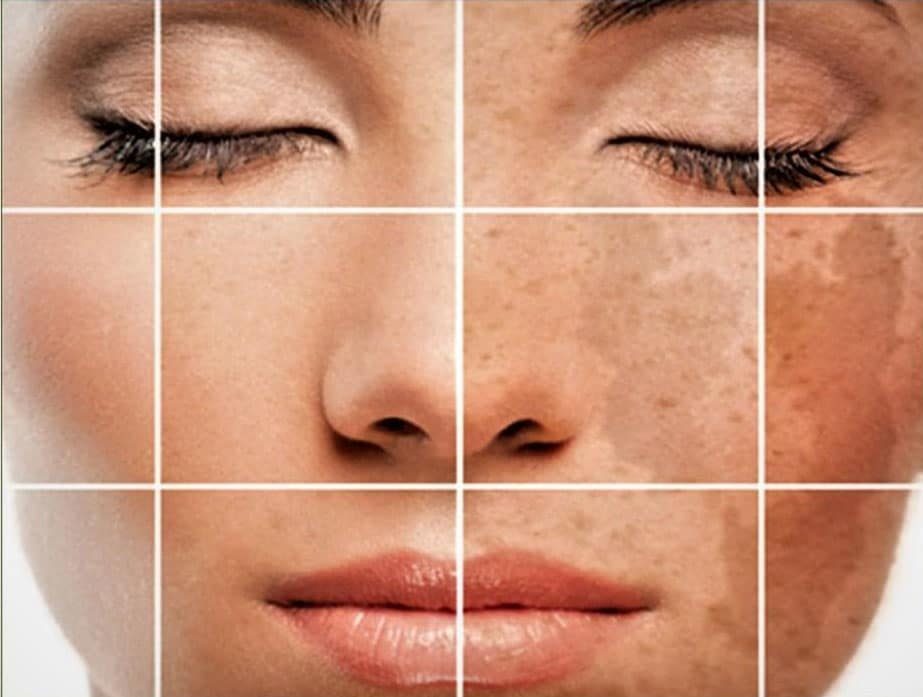How to achieve a bright white smile despite racial pigmentation.
If you have racial pigmentation in your gums and oral mucus membranes, you may worry that it will limit your ability to achieve a bright white smile. However, this does not have to be the case! There are a variety of ways to get a brighter smile, even with darkly pigmented gums. In this blog post, we will discuss how to achieve a bright white smile despite racial pigmentation.
The science of gum pigmentation
Racial pigmentation is the darkening of the oral mucosa and gums due to the presence of melanin, a pigment produced by cells known as melanocytes. Melanin is responsible for the color of our skin, eyes, and hair, and its production is triggered by the exposure of UV radiation from the sun. In the mouth, the melanocytes are found in a layer beneath the mucosal tissue and are more prevalent in people with darker complexions.
In some cases, racial pigmentation can be seen in areas of the gums where tooth loss or trauma has occurred. This is because the exposed root surface may contain higher concentrations of melanocytes than elsewhere in the oral cavity. Racial pigmentation can also be caused by medications or certain illnesses, including diabetes and thyroid disorders. In rare cases, it can indicate an underlying health condition.
When it comes to maintaining a bright white smile, reducing melanin in the oral cavity is key. However, since racial pigmentation is largely genetic, it is difficult to completely eliminate it. Fortunately, there are ways to minimize its appearance.
Multifocal pigmentation
Multifocal pigmentation is an oral condition in which the gums and oral mucous membranes become darkly pigmented. This form of discoloration usually appears in multiple spots on the affected area, and is often more pronounced than the more uniform pigment seen in racial pigmentation. Multifocal pigmentation can also be caused by trauma to the mouth or overexposure to certain drugs or chemicals.
The causes of multifocal pigmentation are not completely understood, but it is thought to be linked to a malfunctioning melanin-producing cell, leading to an increase in melanin production in certain parts of the mouth. The resulting excess melanin then accumulates, resulting in dark spots. Treatment of multifocal pigmentation involves lightening or whitening of the affected areas, either with laser treatment or whitening agents such as hydrogen peroxide.
Ethnic pigmentation
Racial pigmentation is a type of melanin-producing cells found in the oral mucosa and gums. It is most commonly seen in individuals of African or Asian descent, but can be present in other ethnicities as well. This type of pigmentation is not necessarily a health threat, however it may affect the aesthetic appearance of the smile. Ethnic pigmentation in the gums may appear darker than lighter-skinned individuals, which can cause people to feel self-conscious about their smiles. In order to address the issue, there are a number of treatments available to lighten and brighten the gum tissue, resulting in a more uniform gum color.
Achieving a bright white smile
Racial pigmentation can be one of the biggest challenges to achieving a bright white smile. While darkly pigmented gums are not a health threat, they can make it difficult to achieve the desired aesthetic. Fortunately, there are some ways to reduce or lighten the melanin levels in your mouth.
For those with moderate racial pigmentation, whitening toothpastes can help to lighten the discoloration. These toothpastes contain hydrogen peroxide or other whitening agents which can effectively reduce the discoloration of the gums over time. Additionally, professional whitening treatments such as laser whitening or bleaching may also be used to lighten the gums.
For those with more extreme racial pigmentation, there are also options available. Oral surgeons can perform gum grafts to replace the darker colored gums with lighter ones. This procedure is generally done in conjunction with cosmetic dentistry to ensure that the gums are in line with the rest of the teeth.
Regardless of the severity of the racial pigmentation, there are steps that can be taken to lighten the discoloration and achieve a bright white smile. It is important to consult a dental professional to discuss what options are available and which ones are right for you. With the right approach, you can find the confidence to smile brightly despite the racial pigmentation.
What causes pigmentation of oral mucosa?
Racial pigmentation is one of the main causes of pigmentation of the oral mucosa. This is due to the melanin production that occurs in the cells of the mucosa, which varies between races and ethnicities. People with darker skin tones will typically have more melanin in their mucosal cells and thus a darker pigmentation. Other possible causes of oral mucosal pigmentation include smoking, prolonged sun exposure, certain diseases, and some medications. In some cases, the cause may be unknown.
Is oral pigmentation normal?
Oral pigmentation, including racial pigmentation, is an entirely normal condition and is not a health threat. It is caused by an increase of melanin in the gums and oral mucosa and is typically seen in individuals with darker skin tones. However, this can affect people of any ethnicity and often results in a discoloration that many people feel diminishes their smile. While this condition is not harmful, there are some steps that can be taken to reduce its visibility.
How can I reduce melanin in my mouth?
Melanin is the pigment that gives color to the skin and mucous membranes, including the gums. Unfortunately, racial pigmentation can cause darkening of the gums, which may be a source of insecurity or concern for many individuals. Fortunately, there are ways to reduce melanin in the mouth.
The first step in reducing melanin in the mouth is to practice good oral hygiene. Regularly brushing, flossing, and using mouthwash can help remove discoloration from the gums. Additionally, it is important to avoid certain habits that can contribute to oral pigmentation such as smoking and drinking tea or coffee.
Other methods for reducing melanin in the mouth include topical treatments such as whitening products and laser treatments. Whitening products containing hydrogen peroxide can be used to reduce discoloration on the teeth and gums. Laser treatments can also be used to target areas with excessive melanin, resulting in a brighter smile.
Finally, many people have had success with natural remedies such as rubbing lemon juice or baking soda onto their gums. While these methods do not provide immediate results, they can be helpful in reducing melanin levels over time.
Overall, there are many options available for reducing melanin in the mouth. Taking the necessary steps to maintain good oral hygiene, avoiding habits that contribute to pigmentation, and using topical treatments or natural remedies can all help reduce racial pigmentation and improve overall oral health.
Conclusion
Racial pigmentation can be a source of insecurity for many, but it is important to remember that it is harmless and normal. Darkly pigmented gums are nothing to be ashamed of, and there are steps you can take to reduce the melanin in your mouth and brighten your smile. With proper dental hygiene, such as brushing and flossing daily, avoiding acidic or sugary foods and drinks, and visiting your dentist regularly, you can help maintain a healthy, white smile.

